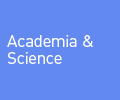
Toshiba Lectures in Japanese Art: LOOKING FOR THE ROOTS OF MODERN JAPANESE SCIENCE AND TECHNOLOGY IN EDO-PERIOD JAPAN 1615-1868
20, 26 & 28 November 2014
Lecture 1
Applied Aesthetics: Nurturing Craft Innovation and Beauty in Edo-period Japan*
Thursday 20 November 2014
6.30pm** (*Simultaneous Interpretation)
Weston Room, Norwich Cathedral Hostry, Norwich
**The lecture will commence slightly later than usual due to the Christmas Parade starting at Norwich Cathedral at 6pm.
Admission Free. All Welcome.
Lecture 2
An Eye for Nature: Scientific Developments in Edo-period Japan*
Wednesday 26 November 2014
6.30pm (Doors open at 6pm) (*Consecutive Interpretation)
Brunei Gallery Lecture Theatre, SOAS
Russell Square, London WC1H 0XG
Admission Free. All Welcome. Booking NOT required, allocation on arrival
Lecture 3
The Spirit of Compassion: Technological Progress in Edo-Period Japan*
Friday 28 November 2014
6.30pm (Doors open at 6pm) (*Consecutive Interpretation)
Stevenson Lecture Theatre, The British Museum
Great Russell Street, London WC1B 3DG
Admission Free. All Welcome. Booking NOT required, allocation on arrival
Professor Suzuki Kazuyoshi's series of 3 lectures will shed light on the expansion of education, discovery, science and the arts in the Edo period (1615-1868), as well as providing an examination of craft innovation during the period.
By the 18th century in Japan, literacy and numeracy were increasingly perceived as ‘essential tools for worldly success’. During the Edo period, regional initiatives encouraged schooling regardless of social rank with educational facilities run by local and religious institutions.
Remarkably although the Tokugawa government’s policy of severe maritime restrictions fostered relative isolation in order to preserve domestic culture from ‘foreign influences’, foreign documents and books, often descriptive of new technologies were translated and widely distributed and studied. One interesting example is the introduction of Western clocks and time-keeping technology. This innovation allowing for the standardisation of units of time replaced the old system of wadokei or Japanese style clocks. Wadokei were originally developed from the late 16th century and organised time into six daytime hours and six nighttime hours whose length varied according to the season and time of year. The standardisation of time with western-style clocks had a profound effect on Japan and its modernisation.
In this Toshiba Lectures Series on Japanese Art and Science, Professor Suzuki Kazuyoshi will take an in-depth look at the origins of the Japanese ‘making of things’ (monotsukuri) from aesthetics to function during the Edo period and will trace their implications for the present day.
20 26 & 28 November 2014, 6.30pm |
 |
|
Norwich Cathedral Hostry (Weston Room), Norwich NR1 4EH School of Oriental and African Studies, Brunei Lecture Theatre, Russell Square, London, WC1H 0XG The British Museum, BP Lecture Hall, Great Russell Street, London WC1B 3DG |
||
The Sainsbury Institute |
||
